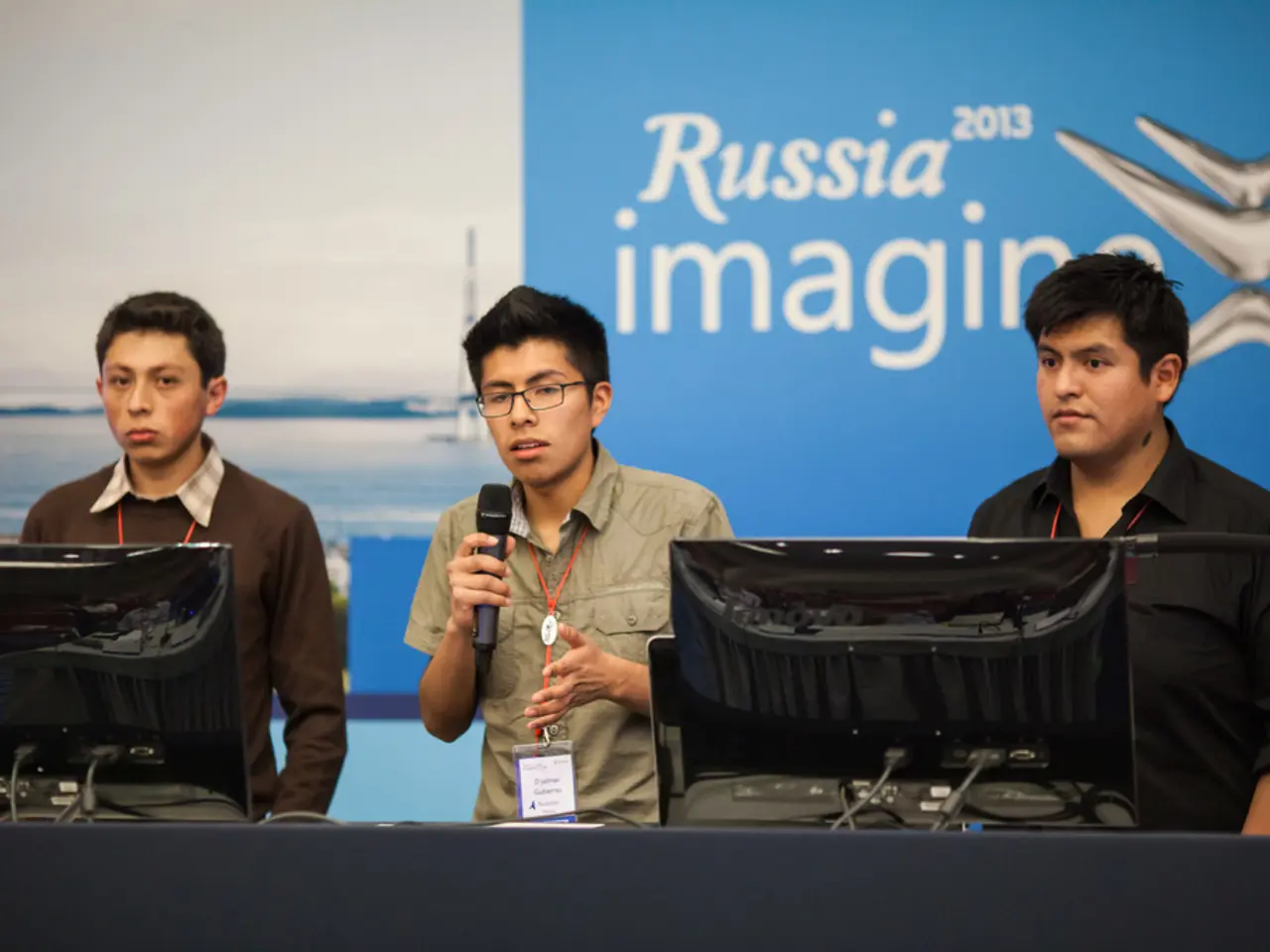AI in Job Design: Revolutionizing the Process Revealed
Generative AI is gaining traction as a valuable tool for learning and development in numerous organisations. This shift in work practices is guided by a four-step redesign process: Decompose Jobs by Tasks, Recompose Jobs with GenAI Integration, Redesign Processes, and Refocus Talent and Reskilling.
Integrating AI to Transform Core Operations
Businesses are embedding generative AI in data analysis, decision-making, and customer engagement to boost efficiency, scalability, and personalisation. By automating data processing, pattern recognition, and predictive analytics, generative AI enables more targeted marketing and better customer insights.
Redesigning Workforce Roles and Collaboration
With generative AI set to automate up to 30% of work hours by 2030, organisations need to adapt their workforce strategies towards AI-augmented roles. This involves reskilling employees to work alongside AI, fostering human-AI collaboration, and promoting skills for AI-driven tasks. Collaborative work processes and cross-disciplinary teaming will become essential to leverage AI’s full potential.
Accelerating Innovation and R&D with AI Tools
Generative AI can speed up innovation cycles, particularly in prototyping and ideation, by enabling rapid iteration and creative idea generation. Organisations can harness AI to expand creative capabilities, especially aiding less-creative users, while highly creative individuals can use AI as an extension of their expertise.
Focusing on Change Management and AI Maturity
Despite rapid deployment, only a minority of firms have reached full AI maturity. Effective strategies include improving data quality, clarifying ROI expectations, and establishing robust risk management to sustain AI initiatives. Firms must invest in organisational change to embed AI in culture, governance, and business models for long-term impact.
Leveraging AI to Create New Business Models and Revenue Streams
The shift to AI-driven operations opens opportunities for new competitive advantages and business models. For instance, AI-powered search and personalization have driven significant revenue growth. Organisations should rethink traditional processes and revenue strategies to harness these new capabilities.
In a practical framework, organisations should:
- Embed generative AI into operational workflows to enhance speed, accuracy, and personalisation.
- Reskill and reorganise workforce strategies around human-AI collaboration and new AI-augmented roles.
- Use AI to accelerate innovation, R&D, and creative problem-solving.
- Build data governance, ROI metrics, and risk frameworks for sustainable AI integration.
- Explore new revenue models enabled by AI capabilities, disrupting traditional business processes.
This comprehensive reimagining enables organisations to not only automate routine tasks but also drive innovation, productivity, and growth in the AI era.
Refocusing Talent and Reskilling
The final step in the redesign process is refocusing talent and reskilling, allowing organisations to reallocate human effort more strategically. To fully harness the potential of GenAI, companies must strategically alter how work is conceptualised and executed.
Supporting Innovation and Creativity
GenAI can support innovation and creativity, not just process automation. Leaders are tasked with ensuring responsible AI deployment, emphasising transparency, compliance, and ethical standards.
Investing in Training and Reskilling Initiatives
Organisations should invest not only in AI tools but also in training and reskilling initiatives. Over 60% of firms plan to integrate GenAI into learning programs. Employees will learn new skills through hands-on experience with AI systems, allowing them to adapt to transformed roles more naturally.
Transforming Task Structures Across Industries
GenAI is reshaping task structures across 19 industries, with the potential to transform 44% of working hours. One example of this is an insurance process restructured to minimise friction and maximise trust, with AI tools handling routine claims instantly and more complex claims being escalated to humans.
The challenges of adapting to GenAI are considerable, but the rewards in innovation, efficiency, and employee empowerment are even greater. The first step in the redesign process is breaking down roles into specific tasks, assessing their reliance on language, dependence on knowledge and collaboration, and the ambiguity and complexity involved in their execution. The workforce must evolve alongside technology through reskilling initiatives.
In job-specific terms, data scientists can see as much as 76% of their work augmented or automated by GenAI, driving up to 25% productivity improvements. Over 40% of firms aim to invest heavily in GenAI for learning and development. Organisations should deconstruct and reconstruct job roles, workflows, and talent strategies to thrive in the AI-driven era. Redesigned jobs must be integrated into reimagined workflows, aligning automated, augmented, and human-performed tasks into cohesive processes. Tasks are then categorised as automatable, augmentable, or human-exclusive based on their compatibility with GenAI.
- In the realm of finance and business, integrating artificial-intelligence-based generative AI can revolutionize operations, enhancing efficiency, scalability, and personalization by automating data processing, pattern recognition, and predictive analytics for improved decision-making and customer engagement.
- To cater to the growing presence of artificial intelligence in business careers, organizations must focus on refocusing talent and reskilling their workforce, fostering human-AI collaboration, and promoting skills for AI-driven tasks, thereby aligning and redesigning workflows to thrive in the AI-driven era.




